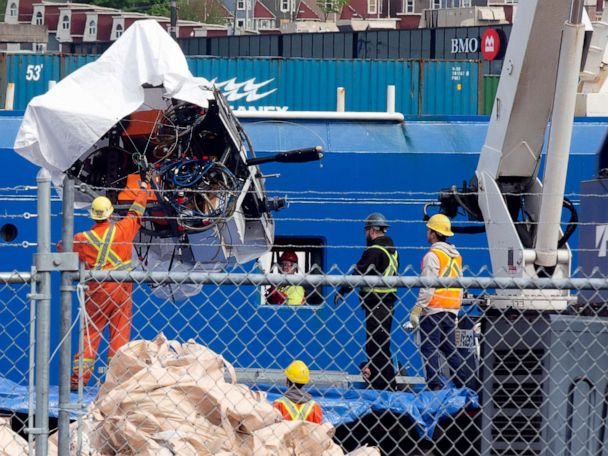Share this
‘Presumed human remains’ have been found in the wreckage of the Titan submersible, the US Coast Guard announced on Wednesday, June 28.
The remains were recovered “within the wreckage” of the submersible, the Coast Guard said in a news release nearly a week after authorities determined the Titanic-bound vessel had imploded in the North Atlantic, killing all five men aboard.
The agency is in the early stages of an investigation into the causes of the disaster. The Coast Guard’s Marine Board of Investigation (MBI) will transport the evidence to a US port for further analysis and testing.

MBI chair Capt Jason Neubauer said in a statement that there was “still a substantial amount of work to be done to understand the factors that led to the catastrophic loss of the Titan and help ensure a similar tragedy does not occur again”.

“I am grateful for the coordinated international and interagency support to recover and preserve this vital evidence at extreme offshore distances and depths,” Capt Neubauer said.
All five people on board the vessel died on 18 June after it imploded about 90 minutes into a dive to view the famous 1912 shipwreck, which sits at a depth of 3,800m (12,500ft) in the north Atlantic.
The passengers were the head of OceanGate, which organised the dive, 61-year-old Stockton Rush; British explorer Hamish Harding, 58; Shahzada Dawood, 48, and his son, Suleman Dawood, 19; and French diver Paul-Henry Nargeolet, 77.
Officials were initially sceptical about the prospect of recovering any of the bodies.
“This is an incredibly unforgiving environment down there on the seafloor,” Coast Guard Adm John Mauger said, shortly after the loss of the vessel was confirmed.
Cpt Neubauer said at the time that investigators would take “all precautions” if they discovered human remains and that the probe would likely include a formal hearing with witness testimony.
So far, the coast guard says, five major pieces of the sub have been found in a large debris field near the bow of the Titanic.
The debris brought ashore on Wednesday appeared to include at least one titanium end cap, the sub’s porthole with its window missing, as well as a titanium ring, landing frame and the end equipment bay, according to BBC science correspondent Jonathan Amos.
The recovery mission was led Canadian ship Horizon Arctic, which carried a remotely operated vehicle operated Pelagic Research Services. The company said in a statement earlier Wednesday that its team had completed off-shore operations and was returning to base.
